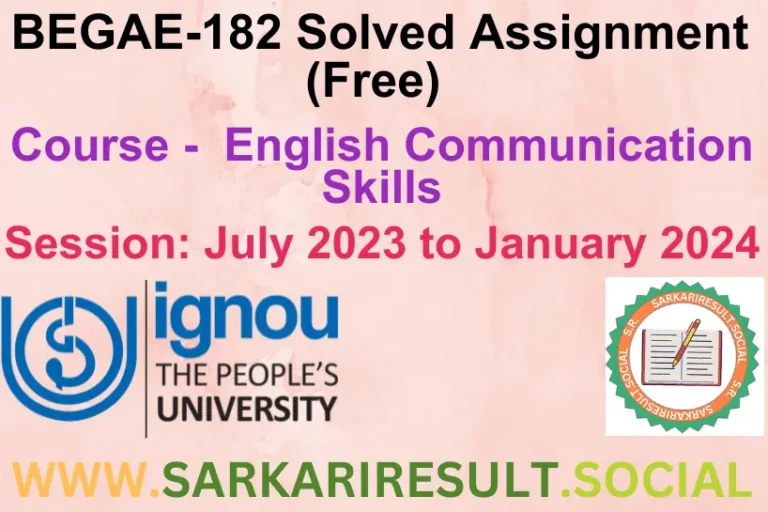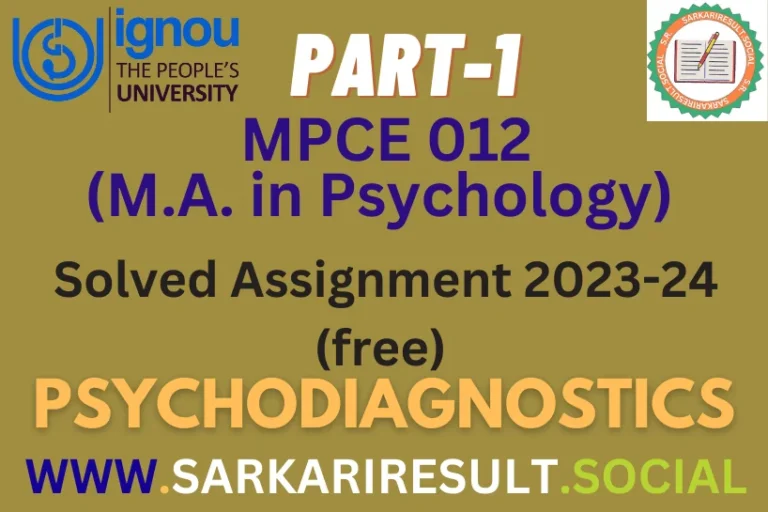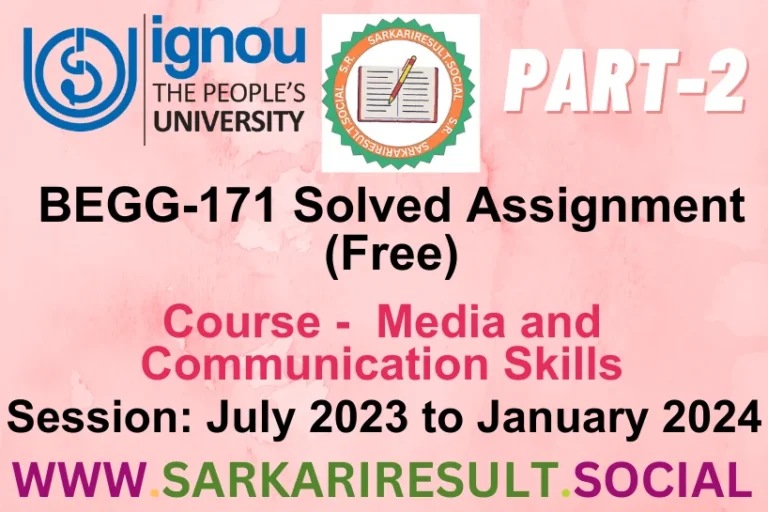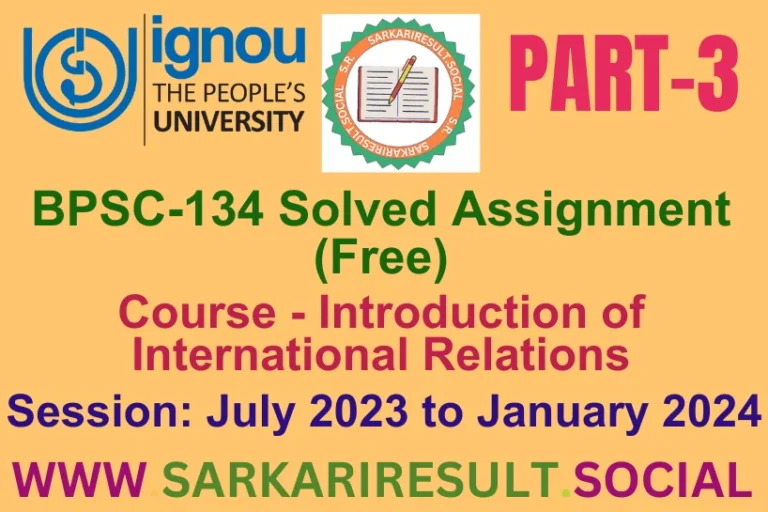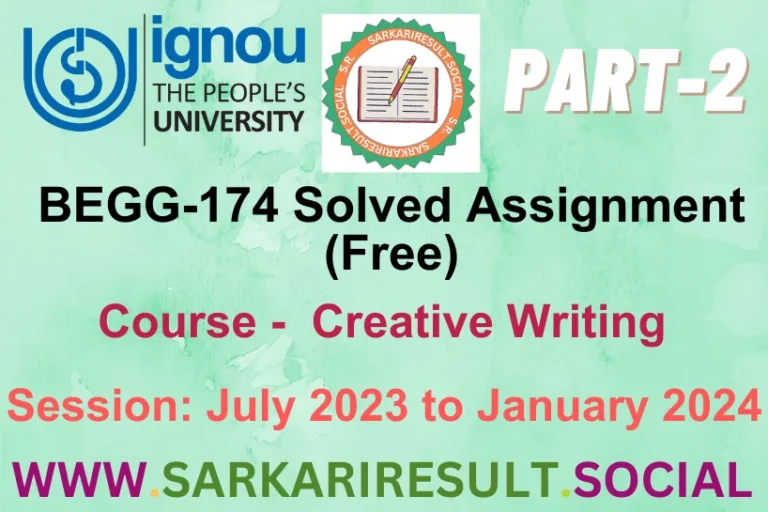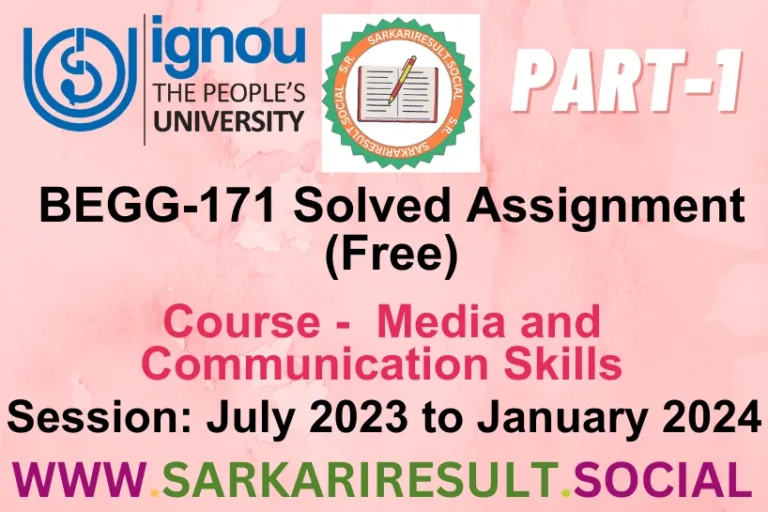BPAG 171 SOLVED IGNOU ASSIGNMENT FREE PART 3
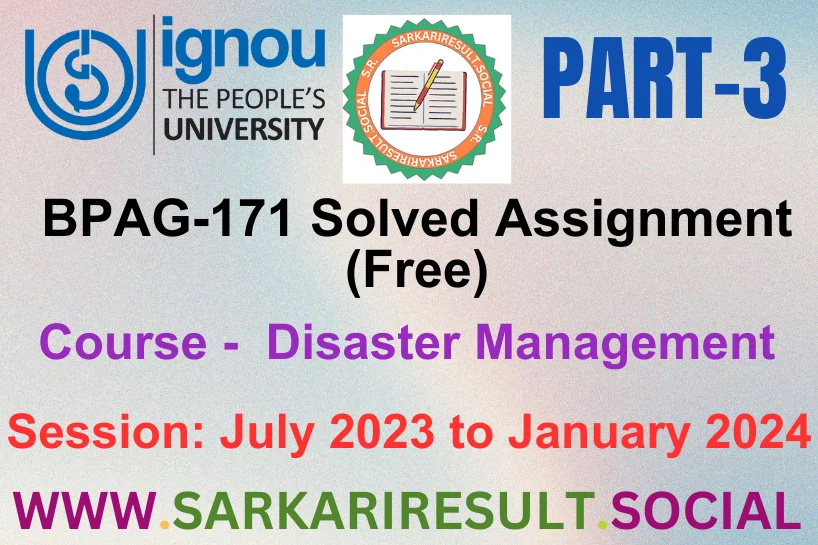
Welcome to the BPAG 171 SOLVED IGNOU ASSIGNMENT FREE PART 3 TMA. Assignment C simplifies your approach with concise answers to five questions. In just 100 words per response, explore the nature of droughts, understand risk perception, trace the evolution of the National Disaster Management Authority, delve into the State Disaster Response Fund, and discuss the priorities of the Sendai framework for disaster risk reduction. Our succinct solutions empower you to navigate these diverse topics effortlessly, ensuring a seamless completion of your assignments while gaining valuable insights into disaster management. Our IGNOU Solved Assignments 2024 for this section serve as your creative guide.
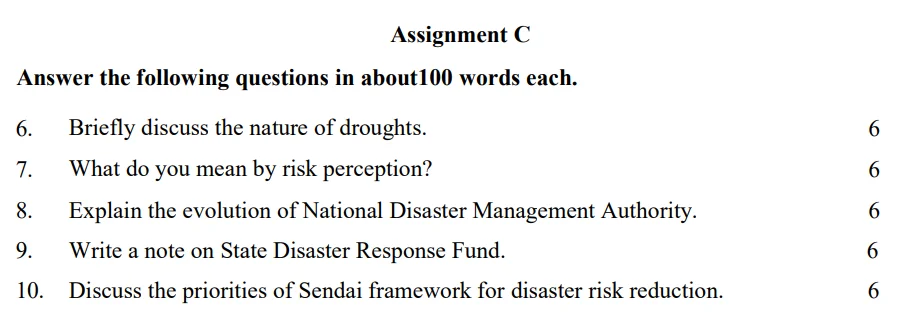
Answer the following questions in about 100 words each.
Q.6 Briefly discuss the nature of droughts.
Ans. Droughts are prolonged periods of abnormally low precipitation, leading to water scarcity and severe environmental, agricultural, and socio-economic impacts. Characterized by a deficiency in rainfall relative to the statistical multi-year average for a region, droughts result in reduced soil moisture, depleted water sources, crop failures, and ecosystem stress.
Their nature varies from slow-onset events, developing over months or years, to sudden and intense flash droughts. Droughts can have far-reaching consequences, affecting water supply, food security, and livelihoods, making them a complex challenge with implications for both human and natural systems.
Q.7 What do you mean by risk perception?
Ans. Risk perception refers to an individual’s or a community’s subjective evaluation and understanding of the likelihood and severity of a potential hazard or threat. It involves cognitive processes, emotions, and cultural factors that influence how people interpret and respond to risks. Perception of risk varies widely among individuals and communities, shaped by personal experiences, cultural beliefs, and information sources.
Understanding risk perception is crucial in disaster management, as it influences preparedness, behavior, and decision-making, impacting the effectiveness of strategies to mitigate and respond to potential hazards.
Q.8 Explain the evolution of National Disaster Management Authority.
And. The National Disaster Management Authority (NDMA) in India evolved in response to the need for a specialized body to coordinate disaster management efforts. Established in 2005, it emerged from the realization that a dedicated agency was required to formulate policies, plans, and guidelines for disaster management.
The NDMA’s creation was prompted by the Indian Ocean tsunami of 2004, which highlighted the need for a comprehensive and integrated approach to handle natural and man-made disasters. As a central agency, the NDMA plays a crucial role in coordinating disaster response, mitigation, and preparedness efforts at the national level in India.
Q.9 Write a note on State Disaster Response Fund.
Ans. The State Disaster Response Fund (SDRF) is a financial mechanism in India established to support immediate relief and response measures during disasters. Each state has its own SDRF, managed by the respective State Disaster Management Authority (SDMA).
The fund is constituted in pursuance of guidelines laid down by the National Disaster Management Authority (NDMA). The SDRF enables states to quickly mobilize resources for timely and effective response to disasters, including relief distribution, rescue operations, and medical assistance. It plays a crucial role in enhancing state-level preparedness and resilience against natural and man-made calamities.
Q.10 Discuss the priorities of Sendai framework for disaster risk reduction.
Ans. The Sendai Framework for Disaster Risk Reduction, adopted in 2015, prioritizes four key areas: understanding disaster risk, strengthening governance for risk reduction, investing in resilience, and enhancing disaster preparedness. It emphasizes a shift from managing disasters to managing the risks that lead to disasters.
The framework focuses on the importance of collaboration, inclusivity, and innovation in building resilience at all levels. By placing risk reduction at the core of sustainable development, the Sendai Framework seeks to minimize the impact of disasters, save lives, and preserve livelihoods, aligning with the broader global goals such as the Sustainable Development Goals (SDGs).
Also See This: BPAG 171 SOLVED IGNOU ASSIGNMENT FREE PART 1

